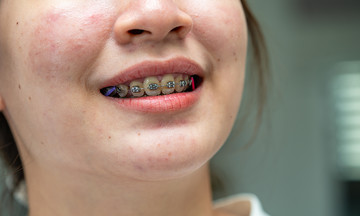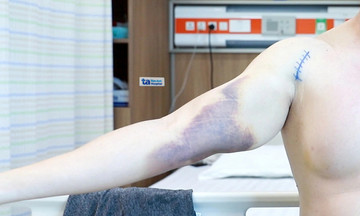A stroke occurs when blood flow to the brain is blocked or a blood vessel bursts, causing a lack of oxygen and damage to nerve cells. Doctor Do Thi Thu Hang, from the Department of Neurology, Neuroscience Center, Tam Anh General Hospital, TP HCM, says that diabetics have a higher risk of stroke than the general population, due to fluctuating blood sugar levels that damage blood vessels and negatively affect blood pressure.
Atherosclerosis: Prolonged high blood sugar damages the lining of blood vessels, promoting cholesterol buildup and the formation of atherosclerotic plaques. These plaques narrow the arteries, obstructing blood flow to the brain, creating blood clots that lead to blocked arteries and ischemic stroke.
High blood pressure: Diabetics are prone to high blood pressure, which strains and weakens brain blood vessels, making them susceptible to rupture and causing hemorrhagic stroke. The combination of diabetes and high blood pressure significantly increases the risk of stroke, according to Doctor Hang.
Dyslipidemia: Diabetics often experience elevated triglycerides and reduced HDL-C (good cholesterol). This condition accelerates atherosclerosis, increases blood viscosity, impedes blood flow, and facilitates blood clot formation, thereby increasing the risk of ischemic stroke.
Blood clotting disorders and chronic inflammation: High blood sugar stimulates inflammatory responses and increases platelet activity. Consequently, blood clots more easily, increasing the risk of thrombosis. This is a cause of transient ischemic attacks or stroke in diabetics.
Damage to small blood vessels in the brain: High blood sugar promotes atherosclerosis, causing the walls of small blood vessels to thicken, impairing circulation and increasing their susceptibility to leakage. This not only causes eye and kidney complications but also affects small blood vessels in the brain, leading to small cerebral infarctions that can cause weakness, memory disorders, and dementia.
To prevent stroke, Doctor Hang advises diabetics to focus on controlling risk factors. This includes maintaining stable blood sugar levels according to the doctor's treatment plan, combined with regular HbA1c monitoring (reflecting blood sugar levels over 3 months) to assess long-term control effectiveness, managing blood pressure, blood lipids, and weight.
 |
3 Tesla MRI scans help detect vascular abnormalities early. Photo: Tam Anh General Hospital
A diabetic's diet should be balanced, prioritizing green vegetables, whole grains, fish, and nuts. They should limit refined sugar, processed foods, saturated fats, and salt. Exercise is recommended for at least 150 minutes a week with moderate-intensity activities such as brisk walking, swimming, or cycling. Avoiding smoking and limiting alcohol consumption also reduces the risk of atherosclerosis.
Regular check-ups and screening for vascular complications are crucial for controlling stroke risk. Through specialized tests combined with diagnostic imaging such as 1.5-3 Tesla MRI, 1975 CT, and 100,000-slice CT, doctors can detect early damage to the heart, kidneys, brain, and eyes, enabling timely intervention. Diabetics experiencing early warning signs of stroke, such as facial drooping, difficulty speaking, weakness or numbness on one side of the body, sudden blurred vision, dizziness, or severe headache, should seek immediate medical attention.
Phuong Pham
| Readers can submit questions about neurological diseases here for doctors to answer. |












